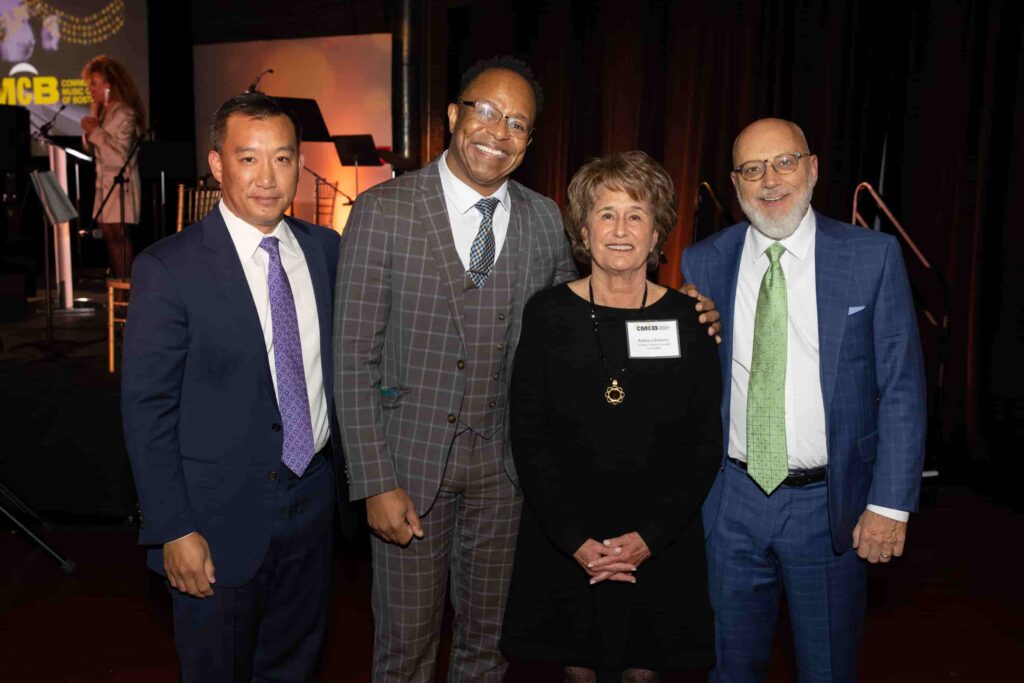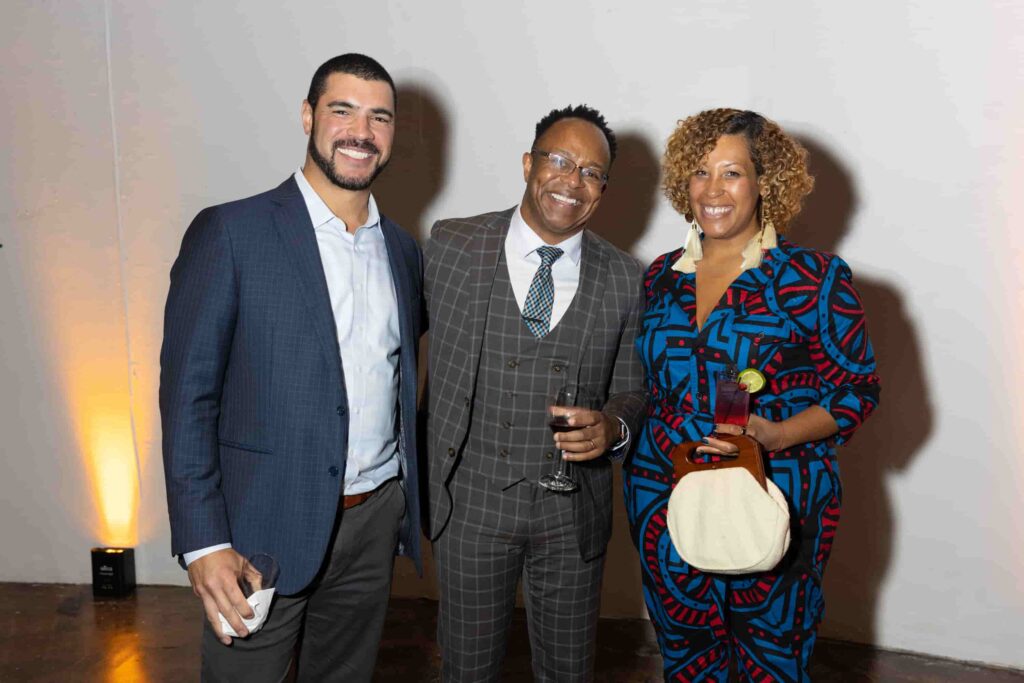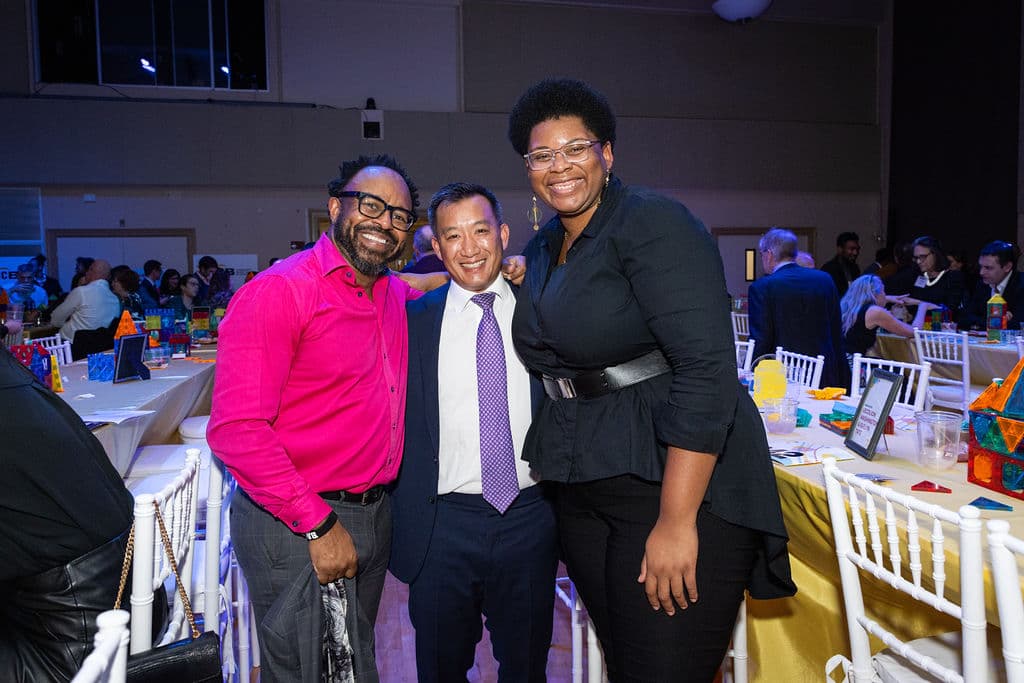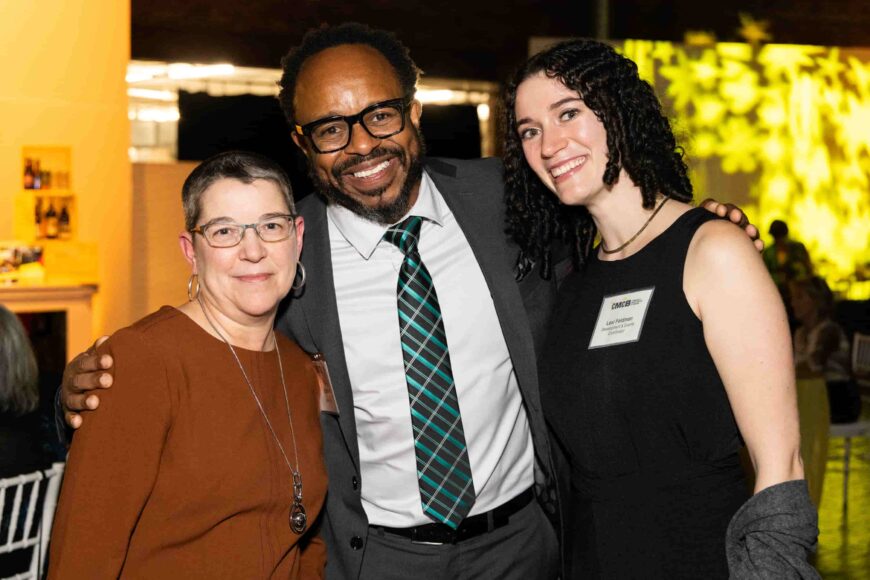By Dr. Thomas Wolf, Principal
An interview with Lecolion Washington, Executive Director of The Community Music Center of Boston

After over 20 years as a performing bassoonist and 15 years as a music professor and arts administrator, Lecolion Washington became Director of the Community Music Center of Boston in 2017. He has established himself as a leader for the next generation of arts entrepreneurs and and a staunch advocate for music’s role as an agent for social change. In 2019, he was selected as Musical America’s Top Professional of the Year.
Thomas Wolf: As Executive Director of one of the oldest arts institutions in Boston, you have been called a change-maker. What exactly are you changing?
Lecolion Washington: The Community Music Center of Boston has been around since 1910. It was established as part of the settlement house movement. Its initial clientele was primarily new immigrants who lived in our South End neighborhood. Like so many institutions of its kind, it was established by wealthy white patrons who believed in the power of music to improve the lives of the poor. Throughout its history, CMCB has added programs and moved in directions according to perceived needs of the times. In the 1950s, we were one of the early adopters of music therapy to address the needs of veterans returning from recent wars with what today we would call PTSD but back then was referred to as “shell shock.” During the 1970s, amidst Boston’s school-related busing crisis, we started a program serving public schools which continues to this day. In the late 1980s and 1990s, there was a push to help our students prepare for conservatories and possible musical careers, given the lack of diversity, especially in classical music. Over time, we added satellites to serve beyond the neighborhood. Today, we are focusing on the creative economy and youth employment opportunities among other things. So, to the extent that CMCB is changing and evolving, its history demonstrates that this is nothing new for us.
Wolf: Talk a little about both the assets and the challenges you encountered when you became director in 2017 and how this was manifested in the board.
Washington: The sheer breadth of CMCB’s programs was impressive—traditional community music school classes and lessons, in-school programs, after-school programs, music therapy, and many others. With all these activities, the board was looking for a leader who would help them come up with a guiding strategy. Operationally, many on the board realized that despite the school’s size and age, the organization was still a bit of a mom-and-pop shop, needing to modernize its business operations and technology according to contemporary best practices. And importantly, the underlying philosophy was one of art-for-art’s-sake whereas many felt it was important to consider the broader impact of the arts on individuals and society.

Wolf: What changes did you want to bring to the board in terms of process?
Washington: My predecessor had been with the organization for 34 years, and inevitably, a board defers to that kind of long-term leadership. Though the board was looking for a strong leader, I was looking for thought-partners. I think in the end we both got what we wanted.
Wolf: And did you see changes in world-view among board members?
Washington: Yes. The board had been struggling with how to make the arts more relevant to young people. They embraced the idea of changing to a more expansive way of thinking about the arts that would capture the interest of a broader swath of our clients. And having come to embrace this different world-view, they realized they needed guidance on how to implement change.
Wolf: So they were looking to you to guide them?
Washington: A good leader doesn’t have all the answers. But he knows how to ask good questions and find expertise where it is required. Together we realized we had to learn more in various areas. This created a new kind of board dynamic and energy. And as we looked at new opportunities and different questions and as we brought new people onto the board many of whom had thought a lot about these issues, the board culture definitely shifted.

Wolf: You talk about bringing in new people. What specifically were you looking for?
Washington: The focus of the board overwhelmingly was the community music school programs of lessons and classes. The great majority of board members lived in the neighborhood, or they had kids who took lessons at the school. But at our first retreat I pointed out that only 15% of our impact on the City was in the immediate neighborhood. We were, as our name suggested, a school for the entire City of Boston. We needed to hear from voices from outside the neighborhood. I also felt that we needed people who were not necessarily connected with our programs but were aligned with our mission and could bring new perspectives. These were people who would not get caught up in the weeds because their strategic mind-set was broader.
Wolf: What about board demographics?
Washington: The majority of our students, taking into account all of our programs, were either Black, Latin or Asian and our governance structure did not reflect that. We needed more people of color on the board who would match the lived experience of the majority of students in our community. I made it personal with my existing board. “I bet every one of you has at least one Black friend. Introduce me. That person may not be the one who joins our board but they can expand our network for recruiting.” And it worked. Following all those threads where they led inevitably found us new recruits. We went from four people of color on a 19-member board in 2017 to ten out of 23 in 2023.
Because networks tend to be homogenous, I encouraged our white board members to go into neighborhoods and spaces and restaurants where they were in the minority. It was an attempt to demystify ‘the other.’ And again, based on the reactions I received, it was successful.
Wolf: What about fundraising issues with the board?
Washington: Existing board members were concerned. They said to me, ‘Yes, but we need to be sure we can find people for the board who can provide the resources we need.’ I answered: ‘You know Black people have money and contacts too.’ And as we diversified our board, our board giving actually went up and we decided to create a minimum annual board member gift of $2,000.
Wolf: So, you increased the percentage of people of color on the board, and fundraising was healthy. But did the conversation change within the board?
Washington: Absolutely, and that in the end was the metric of success. An important issue we were dealing with was cultural inclusion in our programs and what that meant beyond just token efforts like a program during Black History Month. Our tradition had been rooted in western European music of the 18th and 19th century. By having people in the room for whom that was not central to their lived experience, we had more dynamic conversations. And there were other revelations too that were critical to the discussion. For example, as we were talking in a board meeting about being more culturally inclusive, a new Black board member who had grown up in Tennessee was asked whether her parents had gone to the Grand Ole Opry. She explained that because of the color of their skin they couldn’t get in. It was a revealing moment for many.
Wolf: Is there something different today among boards like yours other than the increased diversity?
Washington: Absolutely and it is related to the changing demographics of boards. Board members are still committed to an organization’s mission, as has always been the case. But today, because boards are not as homogenous as they once were and because more are enforcing term limits with new faces coming in all the time, there is a greater diversity of viewpoints and more of a healthy friction in the conversation about how to realize the mission. And I think that is good though, on the other hand, that can lead to a lot less clarity about direction. It forces even legacy organizations to be more entrepreneurial.
Wolf: What advice might you have about boards in 2025?

Washington: More than ever, it is very important in an era of organizational change that board members think about their chief executives and that they provide honest feedback. What do the board members think of the vision or lack of it in the staff leader? How well is a particular chief executive executing on the key roles that lead to success? Being wishy-washy or going along with group think is not helpful.
Second, as boards transition from, say, a working board to a strategic board to a fundraising board that may be involved in a capital campaign (as we are for our new building), board members must assess what productive role they can play and whether they are best suited to the evolution. A board member may have been great in organizing a bake sale, but the organization has moved on since then. Is there still a role?
Finally, as your board process becomes more complex, empower your committee structure and give committees the authority to do their important work. Then be sure you don’t hash out the same conversations in board meetings that were worked through in committee. Use valuable board time on things that are of greatest strategic priority.

